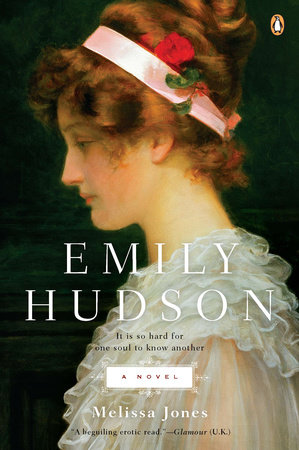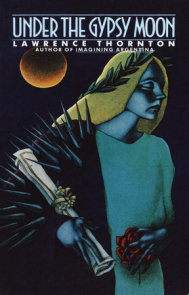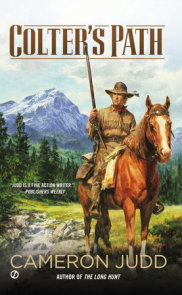READERS GUIDE
Questions and Topics for Discussion
INTRODUCTION
In nineteenth-century Newport Beach, there are few options available to a young woman with an independent spirit and artistic aspirations. When Emily Hudson is unceremoniously kicked out of boarding school and deposited at the home of her wealthy uncle, she discovers that her rebellious streak and tendency to speak her mind are not appreciated by her conservative family. Soon, however, her cousin William, apparently a kindred spirit, whisks her away to Europe to pursue her painting and it seems as though Emily is on the cusp of finding her place in the world—until William’s support takes a darker turn, and Emily is forced to discover the sacrifice and dedication it takes to follow her heart. Set against the dramatic backdrop of nineteenth-century America, England, and Italy—an era marked by the horrors of the Civil War, the wealth and privilege of the American upper class, and the beauty of Old World Europe—and filled with a rich cast of characters, Melissa Jones’s latest novel, Emily Hudson, is the fascinating story of one woman’s personal awakening.
Written partly in letter format, the novel follows Emily as she moves through a series of enchanting locations, finding friendship, artistic inspiration, and love along the way. Her letters are intimate and eloquent views into her frustrations and desires and they leap off the page with an honest and compelling voice. Filling the novel with extensive period detail, Jones draws the reader into a potent swirl of stifling social protocol, tempting romance, and burgeoning freedom. As Emily progresses, she develops a circle of supporters who encourage her quest for fulfillment: Augusta, her boarding school classmate; Mary, William’s reclusive sister; and Miss Drake, Emily’s friend and fellow artist in Italy. Throughout her adventures, however, is the lingering memory of Captain Lindsay, the dashing Civil War hero whose proposal she rejected and yet in whose arms she can imagine a lifetime; no matter where she wanders, Emily can never escape her love for Captain Lindsay.
Emily’s story has its roots in the life of Henry James, specifically his relationship with his cousin Minny Temple. Jones’s novel follows its titular heroine on a journey of self-discovery as she asserts herself and her talent in the face of the era’s restrictive social conventions. Jones has brought to life not only a fascinating character but also an entire era. Following in the tradition of such great writers as James and Edith Wharton, Melissa Jones has a crafted an accessible and riveting story of the American abroad—the education of an ingénue and the making of a woman.
ABOUT MELISSA JONES
Melissa Jones is the daughter of the Jamaican screenwriter Evan Jones and the sister of novelist Sadie Jones. She was born in England and currently lives in an Essex village with her family. Educated at Oxford, she has worked in TV and journalism. This is her third novel.
A CONVERSATION WITH ELIZABETH GILBERT
Q. This novel was based on an incident in the life of Henry James. What appealed to you about this incident and why did you decide to develop it into a full-length novel? What kind of research did you do?
I read a book by Lyndall Gordon called A Private Life of Henry James: Two Women and His Art. The incident of the drowning of the dresses [discussed further below] was very dramatic and got hold of me, but equally poignant was the description of the relationship between Minny Temple and Henry James in their first summer at Newport. I had known that Temple, who died young, had been James’s muse, but only when I read the parts of her letters that survive, and saw how alone she was and all the obstacles she had to face, did I become very moved to recreate her in some way and give her the chance she did not have in life. Minny and Emily separated in my mind as I wrote the novel, but to begin with, it was born out of a sense of the injustice done to Minny as a woman, and to her as an intrinsically sacrificial character in James’s novels.
I did enough research into the period to achieve verisimilitude. But my aim was not to overburden the novel with detail. Actual nineteenth-century novels do not have a great deal of description; it tends to be modern novels that use it to bring back the past. So I tried to write with the same detail I would any book.
Q. In today’s culture, the portrayal of the nineteenth century, particularly the Victorian period, suggests a time of romance and drama; there are many films, TV miniseries, and even magazines devoted to this era. What is it about this time in history that appeals to so many people?
This sounds very shallow—but the clothes were wonderful, a great source of appeal! In so many movies and TV miniseries people’s lives are not shown with all the inconveniences of candlelight and lack of hygiene—everyone looks gleaming and beautiful.
I think there will always be a tremendous attraction to the past—its glamour is that it’s essentially unknowable, however hard we try to recreate it and reimagine it. The nineteenth century’s appeal is that it is relatively recent yet protected (loosely speaking) from our own preoccupations by the barrier of the two wars. It was before industrialization had taken over the world and it had shrunk, when there was a great spirit of adventure and endeavor. Yet there was also tremendous suffering and oppression and filth and disease. I think these contrasts are essentially dramatic. The era can either be used as escapism or to say something more serious, or both. It also lends itself to drama brilliantly, because there are so many more social rules to be broken.
Q. In setting, time, and subject matter, Emily Hudson falls within the tradition of the nineteenth century novel and its focus on the innocent American abroad. Did you have any of these novels in mind when you wrote your book?
Very much so. I love all nineteenth-century novels and read those of James and Wharton at a very impressionable age. My book is definitely an homage. But I also wanted to revise the past slightly. James has the reputation of being a great writer of women, but his punishment of his heroines is cruel—there’s a kind of malice in it. Wharton, the Brontës, Trollope, Dickens—they all have a greater generosity and compassion for their characters. It is part of James’s genius, I suppose, but also the element of his books that is most disquieting, almost carnivorous.
Q. What are you currently reading? What is the best book you’ve read in the past year? Do you tend to read books that are related to the book you’re currently working on, or is it important to separate your reading and your writing?
I am reading a collection, Love Letters of Great Men and Women, edited by Ursula Doyle. The best book I have read this year would easily be When We Were Orphans by Kazuo Ishiguro, which I read on holiday. Incredibly good.
Sometimes I read around the subject I am working on; when I am really into a book, I prefer biography and nonfiction to novels because then the author’s style does not get into my head and muddle me up when I come to write the next day.
Q. The work of the married poets Robert and Elizabeth Barrett Browning appear in the novel. Why did you use these poets in particular? Were you familiar with their work prior to writing this novel? Do you read a lot of poetry?
I used Robert Browning’s poem because I remembered it from school and it seemed so perfect for Emily’s dilemma—wanting to explore her sexuality and being terrified of it—trying to solve it in her head, when she really had to go through it to find the answer. I didn’t know that particular Elizabeth Barrett Browning poem, but I knew her sonnets are considered some of the greatest love poetry ever written, that she had struggled with ill health, that it took her a long time to find love and freedom. All these were parallels to Emily, and the fact that the poets were married and lived in Italy was another reason for me to comb the sonnets until I found the right one.
I tend to reread poems I have loved, especially when I am writing or beginning on an idea.
Q. You begin the novel with a mysterious prologue of a man throwing dresses into the river. Why did you decide to begin the book with that scene?
It is such a dramatic—extremely cinematic scene, and so perfectly symbolic. What makes it more extraordinary is that it actually happened: The dresses belonged to Constance Fenimore Woolson, an author and close friend of Henry James. Chillingly, she committed suicide in Venice, and when Henry James heard of this he went straight to her rooms, burned their correspondence, and took her dresses out into the lagoon and attempted to drown them. It shows a kind of rage and longing to annihilate that I found impossible to forget. Burning the letters deprived Woolson of a voice, and drowning her dresses seems like an attempt to destroy evidence that she had lived at all. One can only guess and speculate at his emotions, but I think it not only disturbing (and disturbed) but also a perfect way of showing how the writer tries to rewrite the life of the women he knew, not only in fiction but in reality.
Q. What inspired you to write Emily Hudson partly in letter form? What challenges does this type of storytelling present for an author?
I cannot think of a nineteenth-century novel that does not use letters to one degree or another. It is a perfect way of moving the story along; but it also shows insight into the state of mind and feeling of the author, giving an immediacy that I think is very important. In this novel I enjoyed mixing the letters with the more objective point of view so that the reader could experience the difference between the way Emily sees herself, or wishes to present herself, and a wider insight into her life.
I suppose the challenges of this method of storytelling are that the character must truly live in the letters and the voice sound “right.”
Q. Emily’s friendship with Augusta plays a large role in the development of her character and the progress of the plot. Why not show Augusta’s letters to Emily?
I thought hard about this. I felt that if I showed Augusta’s letters to Emily I would be telling the story of their relationship—their correspondence would make Augusta an important character in the narrative, when what I wanted was for her to be more of a sounding board. The focus is on Emily in the correspondence, how alone she is, how for Emily, Augusta is yet another person she has lost and is separated from. I didn’t want Augusta to feel too close.
Augusta is in many ways is Emily’s first love—and I wanted to show how Emily rather idealizes her to begin with. She writes to her as if she is a perfect person who will understand it all. I wanted the focus to stay on Emily’s perceptions. Then, when she begins to struggle with her health and matters of the heart, she tries to disguise this from Augusta, and I thought it would be interesting to see that in Emily’s letters: the shame and confusion she must have felt in concealing things from her friend, and yet her sense that it was imperative to do so. In separating herself from Augusta, she grows up. Plus, Augusta is rather conventional—and I don’t think her letters would be all that interesting!
Q. Emily is unorthodox and free-spirited and continually challenges the social restrictions of her era. Do you believe that women today are still pressured to follow certain conventions of behavior?
Absolutely. Part of my reason for writing a period novel is that the restrictions appear so much more clear-cut when one looks at the past and so are easier to illustrate. But I think there are still tremendous pressures.
Although it’s less overtly stated, it still matters very much today who a woman marries—because like it or not, she is going to be dependent in some degree on that person if she has children.
Plus, at the risk of generalizing, there is still very much the idea that women are interested in shoes, bags, and shopping, and men in discussing issues (and sports!). In fact many women have become more attached to sports in their everyday lives partly as a way of sharing something with men.
Women’s interests and ambitions are still questioned—hence the work-or-not-to-work “having it all” debate.
And women are every bit as concerned with body image and how they are perceived as sexual beings; I think high heels are the corsets of the twenty-first century. They are also aware that they must be charming and not too challenging intellectually or emotionally to men unless they are considered somehow unfeminine. This is very similar to the attitudes of the nineteenth century. Just check out the women’s magazines for that.
Q. How did you become a writer and why? When did your interest in writing begin?
I always wrote, from when I was very young. My father is a writer, so it did not seem very outlandish. At eleven I started a diary, which I kept almost every day until I was well into my twenties. But it took me a long time to believe I was a writer, that I might be good enough. I worked as a script editor in TV helping other writers realize their ideas and then gave up my job and took temporary secretarial work to write my first novel. It was a complete leap into the dark but something I felt I had to do.
Q. As a British writer, how did you approach inhabiting Emily’s American perspective on Europe? What cultural differences do you see between the U.S. and Europe?
I did not feel it a tremendous leap to imagine Emily’s American perspective (I hope I’ve done so correctly). I suppose this is partly because I have read so many nineteenth-century novels with American heroines. Emily’s spirit of adventure also came to some degree from that of my grandmother, who was American, a Quaker missionary from Iowa who went to Jamaica to teach children in the Parish of St. Thomas (where she met and married my grandfather). Because of my Jamaican father I don’t feel altogether British—and as a rule, writers feel like outsiders anyway.
I do see American women as still more overtly go-getting and straightforward than English women, who tend to mask their desires/ambitions/talents behind a rather self-effacing manner.
I think the same cultural distinctions between the mind-sets of the inheritors of the Old Empire (Britain) and the inhabitants of the New Empire (America) remain today.
Q. What is a typical workday like for you? Do you have any writing habits or rituals which help provide inspiration or focus? How do you balance work and family?
I drop my children off at school and sometimes have a quick walk or cycle. Then coffee and to my desk until lunchtime. Sometimes I work through without stopping until 3 P.M., when I have to start pickup. Other times I have errands or duties I just have to do so I have to stop earlier. I have to be very determined to get to my desk and start, there are so many distractions, but once I’m into a book, I feel carried along.
I find work and family balance tricky. I never work weekends or outside office hours—except right at the end of a book, when I am completely obsessed.
In general I tend to be impatient when I’m working on a novel because my mind is always on it—but then I’m impatient when I’m not because I wish I was! Writing is a compulsion and family life a necessity, so we make it work.
DISCUSSION QUESTIONS




















